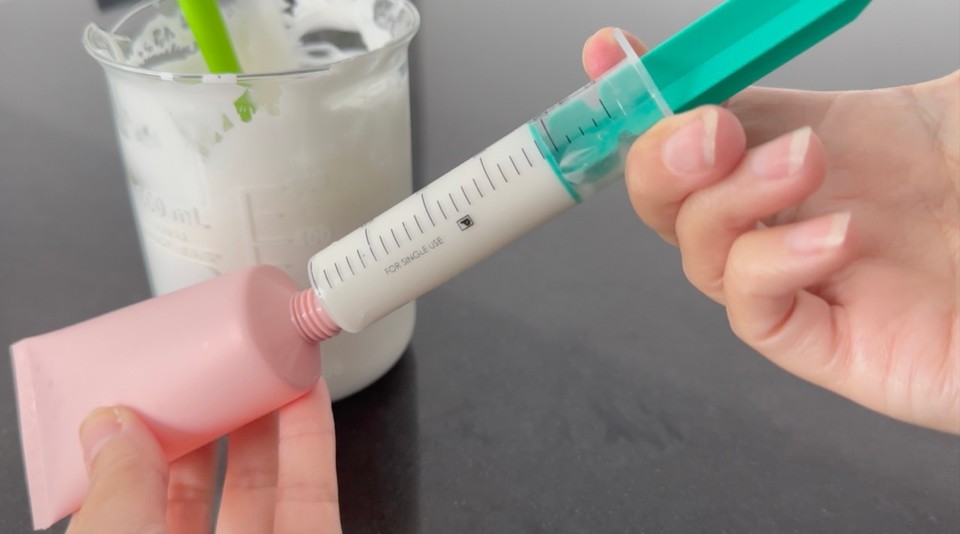Hand Cream For Dry Hands
| Phase | Ingredient | Percent (%) | Weight (g) |
|---|---|---|---|
| Phase A | Xanthan gum | 0.3 | 0.3 |
| Glycerin | 6 | 6 | |
| Distilled water | 55.7 | 55.7 | |
| Phase B | Emulsan II Emulsifying wax (INCI - Methyl Glucose Sesquistearate) | 5 | 5 |
| Murumuru butter | 6 | 6 | |
| Refined avocado oil | 10 | 10 | |
| Cherry seed oil (INCI - Prunus Cerasus Seed Oil) | 6 | 6 | |
| Cetyl alcohol | 2 | 2 | |
| Phase C | Royal jelly extract (INCI - Glycerin and Royal Jelly Extract) | 2 | 2 |
| Roses extract (INCI - Propylene Glycol, Aqua, Rosa Centifolia Flower Extract) | 2 | 2 | |
| Inulin | 2 | 2 | |
| Vitamin B6 (INCI - Pyridoxine Hcl) | 1 | 1 | |
| Cosgard preservative (INCI - Benzyl Alcohol, Dehydroacetic Acid, Aqua) | 0.8 | 0.8 | |
| Fragrance oil | 1 | 1 | |
| Vitamin E | 0.2 | 0.2 |
Winter is here, and the weather is getting colder and drier. Many people experience dry, rough, cracked hands because of the cold and dry air outside. Also, a heated indoor environment can strip our skin of its natural moisture; the heating makes the indoor air dry. Additionally, frequent hand washing further exacerbates the problem by removing the skin's protective oils.

The best way to prevent skin irritation is to moisturize the skin frequently and ensure it is always hydrated. Hand creams create a protective barrier on your skin's surface, sealing in moisture and shielding your hands from harsh winter elements.
If you are new to making creams or lotions, please read this post about making creams in cosmetics.
I prefer a thicker, richer formula for dry skin or during cold weather, especially during the day. Before sleeping, you can use a lotion bar, which is much more oily and absorbs less fast than a hand cream. But during the day, when you work, it is easier to use a hand cream that absorbs much faster, and you can apply several times a day without the oily or greasiness.
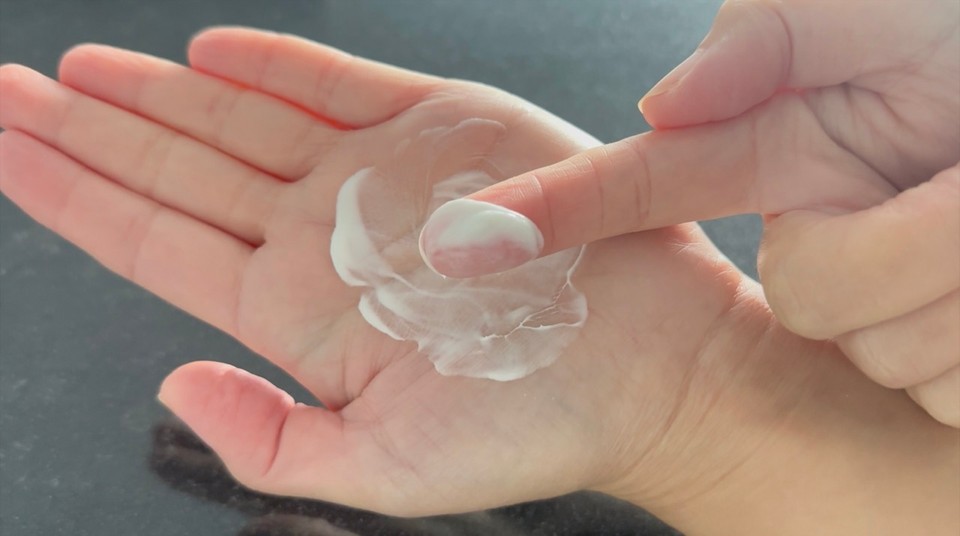
You can help support my website and channel through the “buy me a coffee” page.
Here is the link: https://www.buymeacoffee.com/diycosmetica
Your support helps me keep sharing here more information and more formulas.
The main difference between a cream and a lotion bar is that a cream contains water-based ingredients, and a lotion bar is made from oil-based ingredients (without any water-based ingredients).
Also, a cream will be liquid or semi-solid, while a lotion bar is a solid product.
If you want a lighter cream, please check this post for an all-purpose cream. If you like to make a thick moisturizing body cream, check this food skin body butter formula.
Phase A is the water phase and contains the gum, glycerin, and distilled water.
Phase B, the oil phase, contains the emulsifier and the oils, cetyl alcohol, and butter.
I chose to use Murumuru butter in this formula. Murumuru butter is a natural fat extracted from the seeds of the murumuru palm tree (Astrocaryum murumuru) native to the Amazon rainforest in Brazil. Murumuru butter gives a soft texture to the product. It is known for its smooth and luxurious feel in creams.
Murumuru butter is rich in essential fatty acids, such as lauric acid, myristic acid, and oleic acid. These fatty acids help maintain the skin's barrier function and prevent moisture loss.
You can use shea butter or Cupuacu butter instead of Murumuru butter.
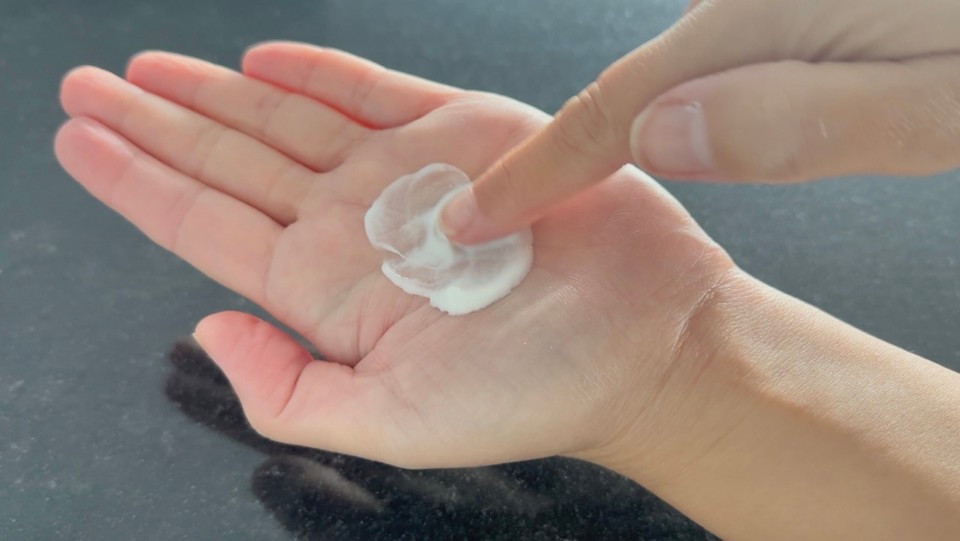
For carrier oil, I used Cherry seed oil and avocado oil.
Cherry seed oil is rich in essential fatty acids, particularly linoleic and oleic. These fatty acids help lock in moisture, providing intense hydration to dry and dehydrated hands. Cherry seed oil is lightweight, so the skin quickly absorbs it. In products like this hand cream, this oil can provide fast and effective hydration without leaving a greasy or heavy residue on the hands.
Use low to medium heat when heating cherry seed oil. Excessive heat can cause the oil to degrade.
Refined avocado oil is rich in monounsaturated fats and oleic acid and a natural source of vitamins A, D, and E. Refined avocado oil helps hydrate and nourish dry hands. Refined avocado oil has a lighter texture than unrefined versions, which means the skin absorbs it relatively quickly.
I also added cetyl alcohol, a fatty alcohol (derived from various natural sources such as coconut oil, palm oil, and soybean oil). In some cases, cetyl alcohol can also be produced synthetically; you can ask your supplier regarding the origin of his products.
Cetyl alcohol serves as an emollient, softening and hydrating the skin by creating a protective barrier on its surface. This barrier effectively locks in moisture, ensuring the hands remain well-hydrated and preventing moisture loss.
Cetyl alcohol also helps to stabilize the emulsion and to thicken it.
You can replace the cetyl alcohol with Cetearyl alcohol.

For an emulsifier, I used Methyl Glucose Sesquistearate. This emulsifier has skin-conditioning properties and creates smooth emulsions.
Methyl Glucose Sesquistearate is a nonionic emulsifier. If you are using a different emulsifier, read about your chosen emulsifier and how to use it.
Also, consider that different emulsifiers result in different textures and consistency and not all emulsifiers share the same properties. To read more about it, check out this post about making basic creams and lotions.
Phase C is the cool-down phase, containing some active ingredients, a preservative, and fragrance oil.
Royal jelly extract is known for its potential skin-nourishing and soothing properties. Royal jelly extract contains natural sugars, proteins, and lipids that can help moisturize and hydrate the skin. It is also rich in vitamins, minerals, and amino acids. Royal jelly contains compounds like niacinamide (vitamin B3) that can help brighten the skin's complexion and reduce the appearance of uneven skin tone.
I also used Rose extract. Rose extract can help moisturize the skin and has soothing and calming properties. Rose extract contains antioxidants that can help protect the skin from environmental stressors and free radical damage.
You can use aloe vera extract, calendula extract, cucumber extract, malva flower extract, or oats extract instead.

Next, I use inulin. Inulin is a naturally occurring carbohydrate found in various plants (such as chicory root, Jerusalem artichoke, agave plant or dandelion roots).
Inulin is a natural humectant (which can attract and retain moisture). Inulin is considered a prebiotic, which means it provides nourishment for beneficial microorganisms on the skin's surface.
Inulin has soothing properties that can be useful on sensitive or irritated skin. Inulin can also help to stabilize the emulsion.
You can swap the inulin with glycerin or aloe vera extract.
Another active ingredient in phase C is vitamin B6.
Vitamin B6 (Pyridoxine Hcl) can help maintain the skin's natural moisture balance, contributing to hydration and preventing dryness. It has anti-inflammatory properties and has mild antioxidant properties.
You can use Centella Asiatica extract, green tea extract, aloe vera extract or ceramides instead.

I used Cosgard as a preservative. If you use a different preservative, use it according to your supplier's instructions.
If you need to use a higher percentage, reduce the distilled water to balance the formula (for example, If you need to use 2% of your preservative, use 54.5% distilled water).
If you want to replace the vitamin E, use jojoba or Rosehip oil instead.
Choose any fragrance oil or essential oil you like. Read about your desired fragrance oil/essential oil and use skin-safe ones according to your supplier's instructions.
I used a syringe to place the cream into tube containers. You can also place this hand cream in a pump bottle or a jar.
Use the calculator to adjust the amount you wish to make.
A final Ph between 5 and 6 is fine. Click on this post for more information regarding pH adjustments in cosmetics.
Method:
- After sanitizing your tools and working place, add the water phase ingredients into a heat-resistance beaker. Start by making a slurry combining the gum and the glycerin, then add the distilled water.
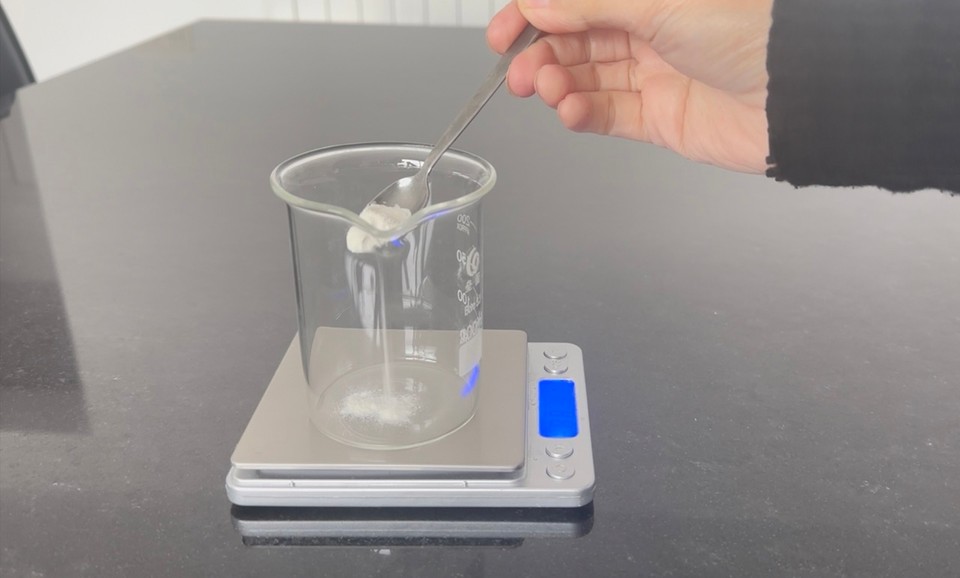
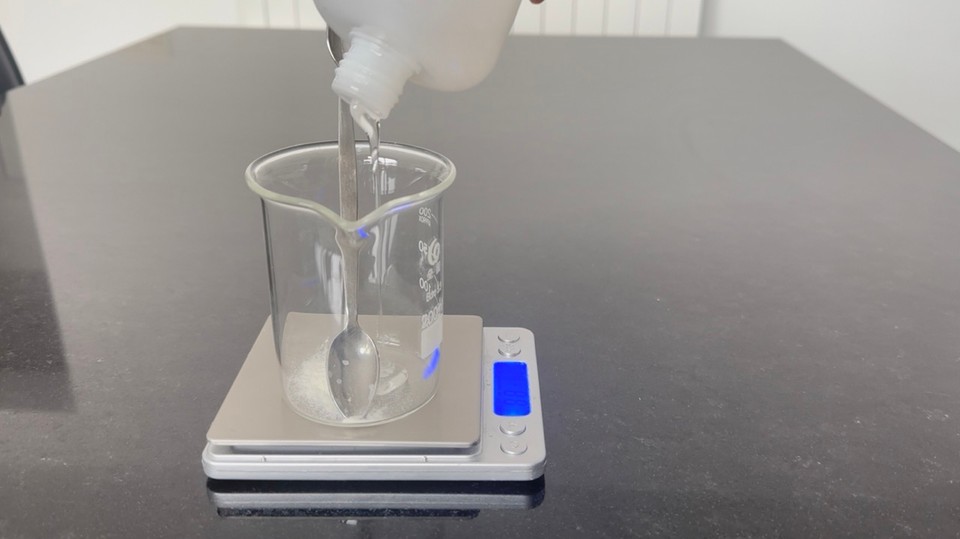
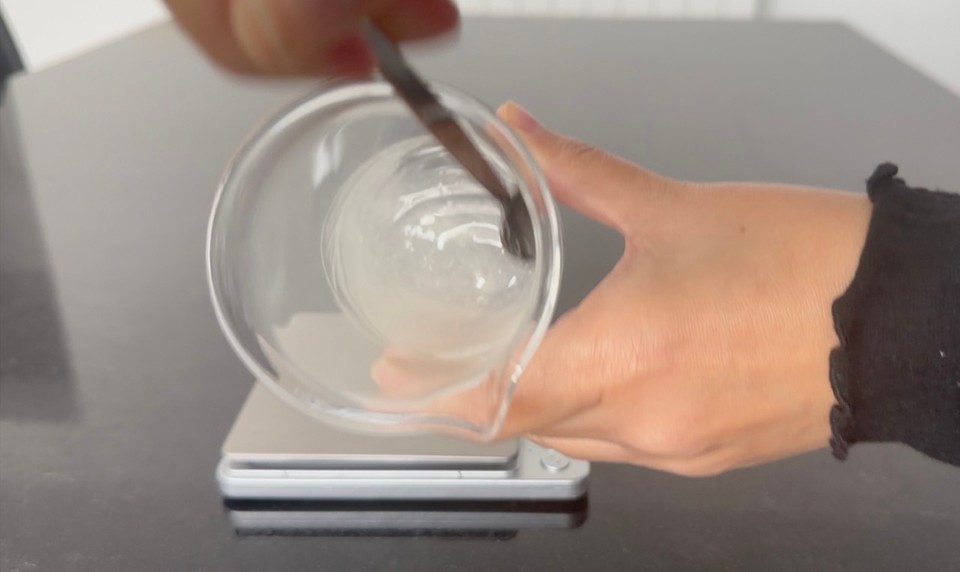
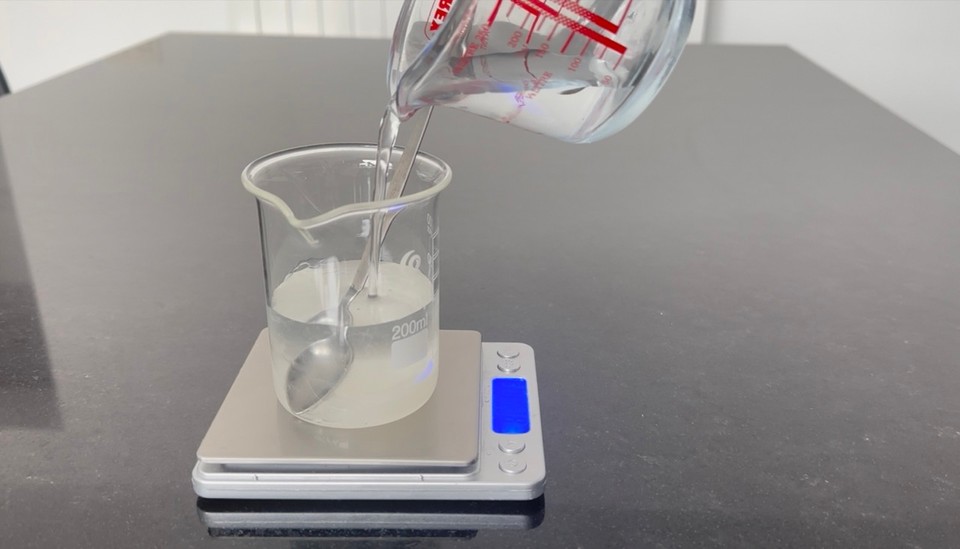
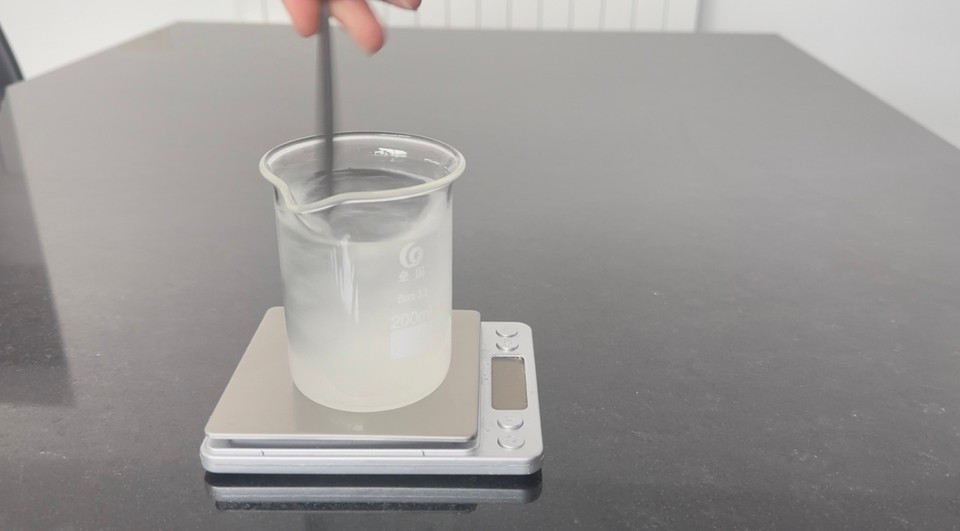
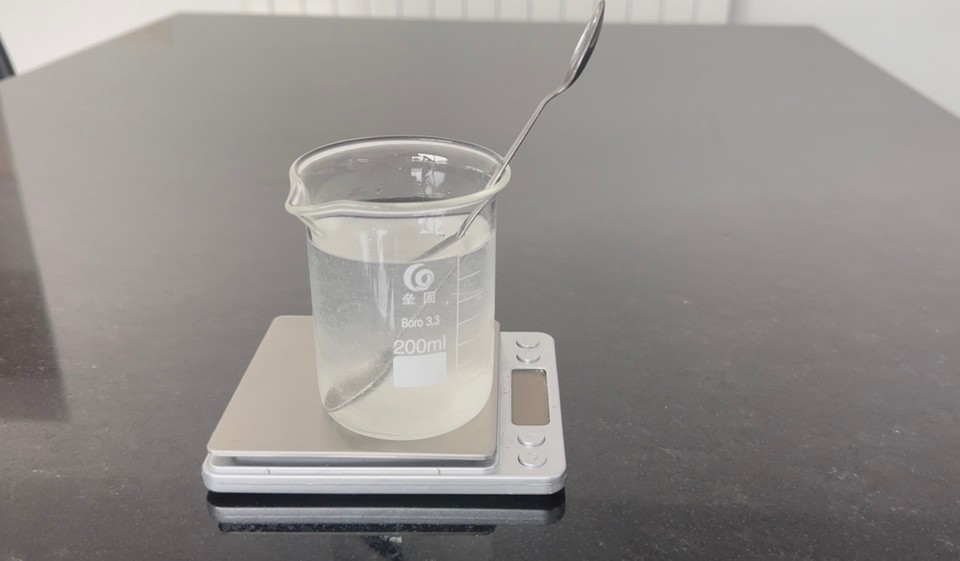
- Cover the water phase beaker to minimize water evaporation (when working with bigger batches, you should scale your water phase before heating and after removing it from the heat. Calculate the water evaporated during the heating and 9add the missing amount to the water phase beaker).
- In another heat-resistant beaker, add the oil phase ingredients (phase B) .

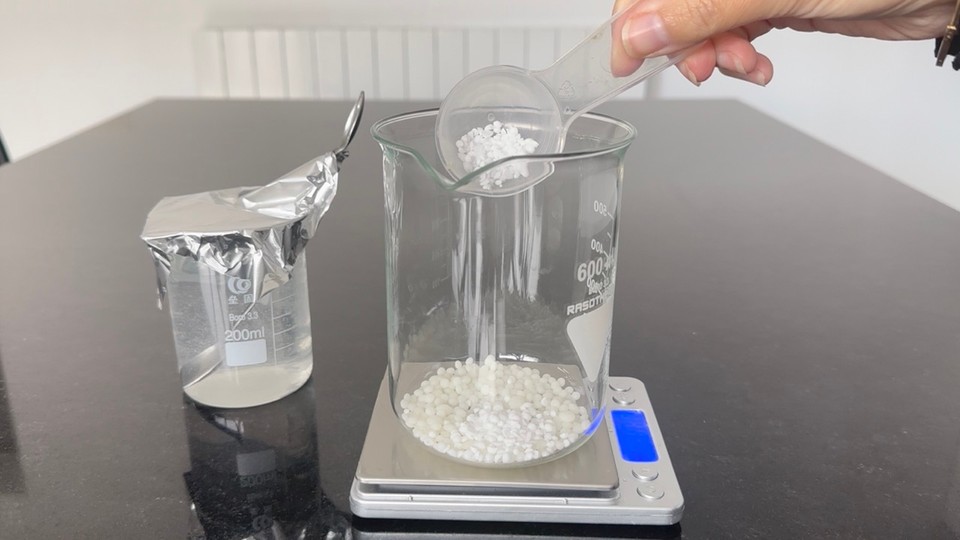
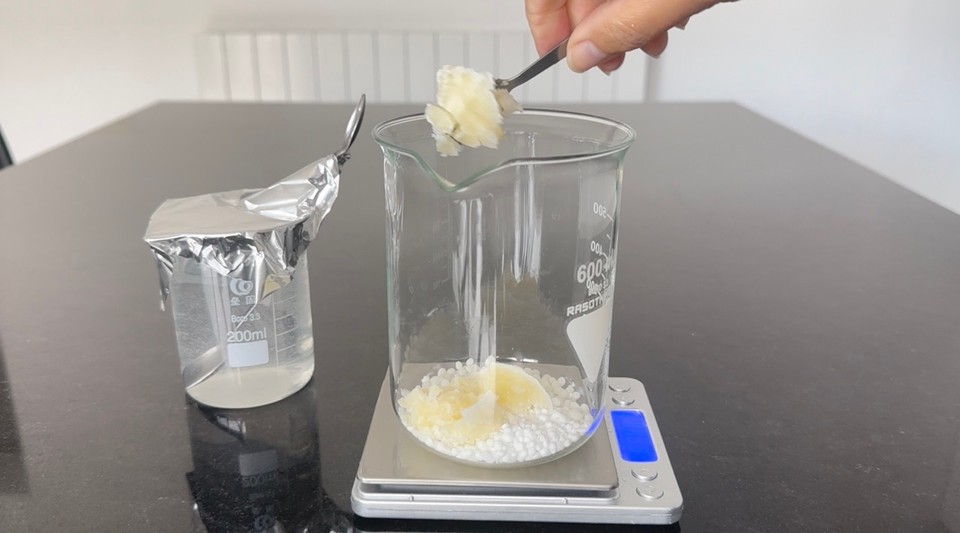
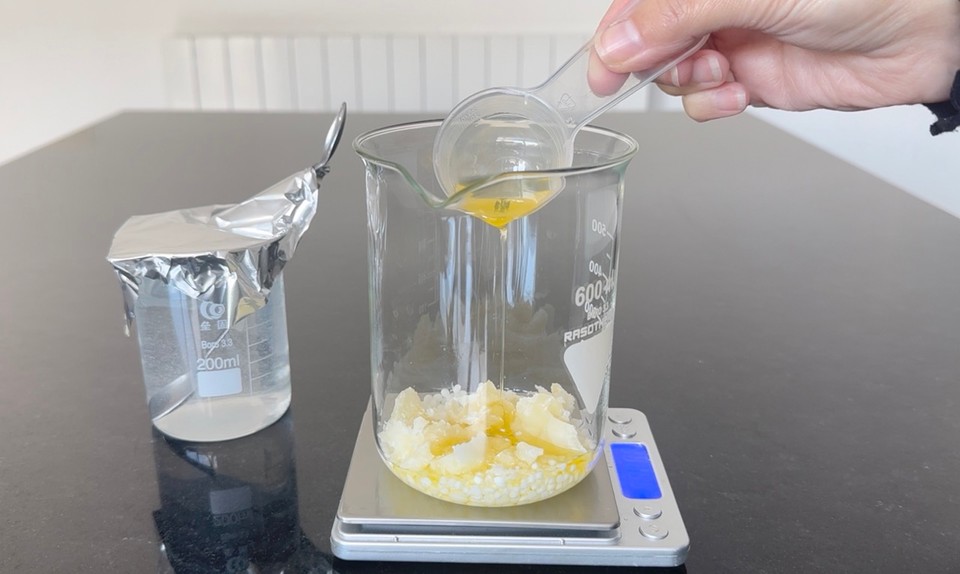
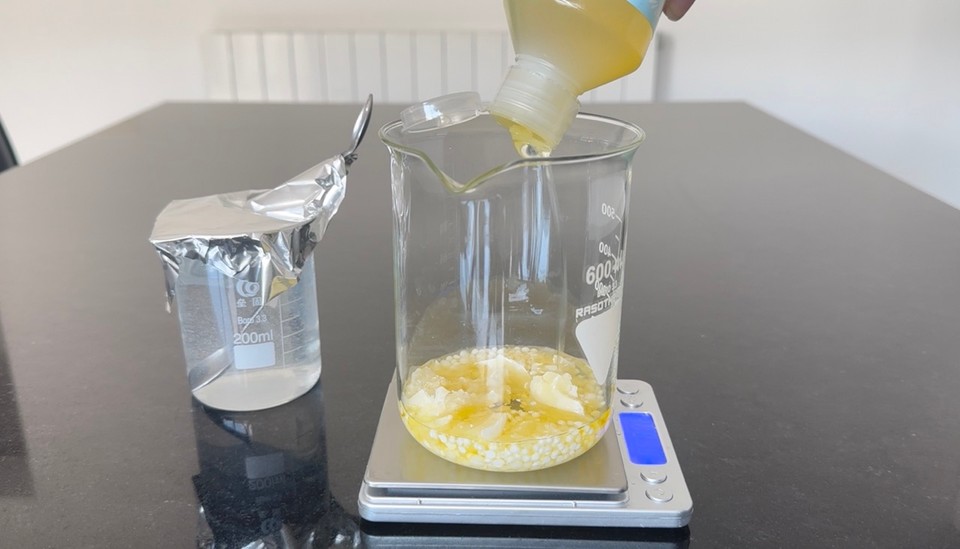
- Place the oil (phase B) and water (phase A) phases into a double boiler on medium heat.
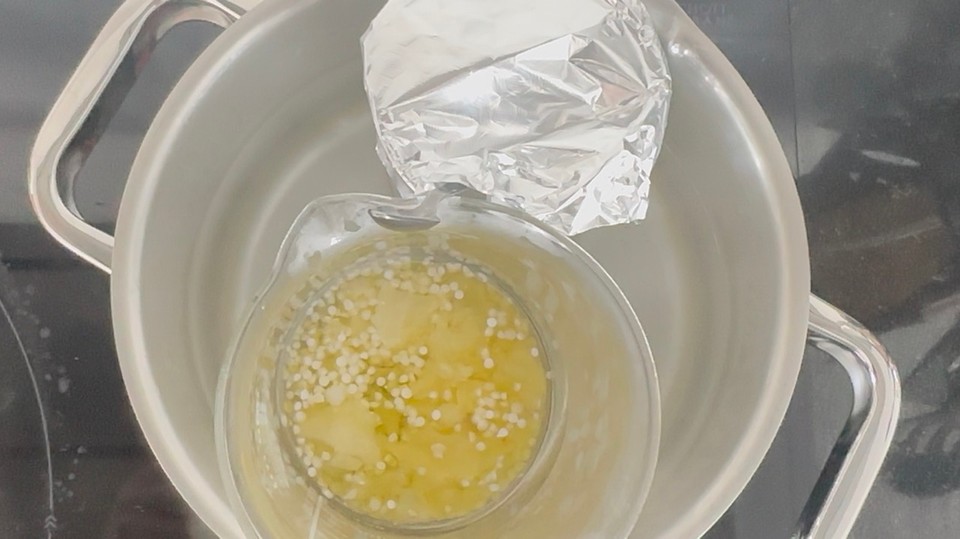
- In another container, prepare phase C ingredients and set them aside.
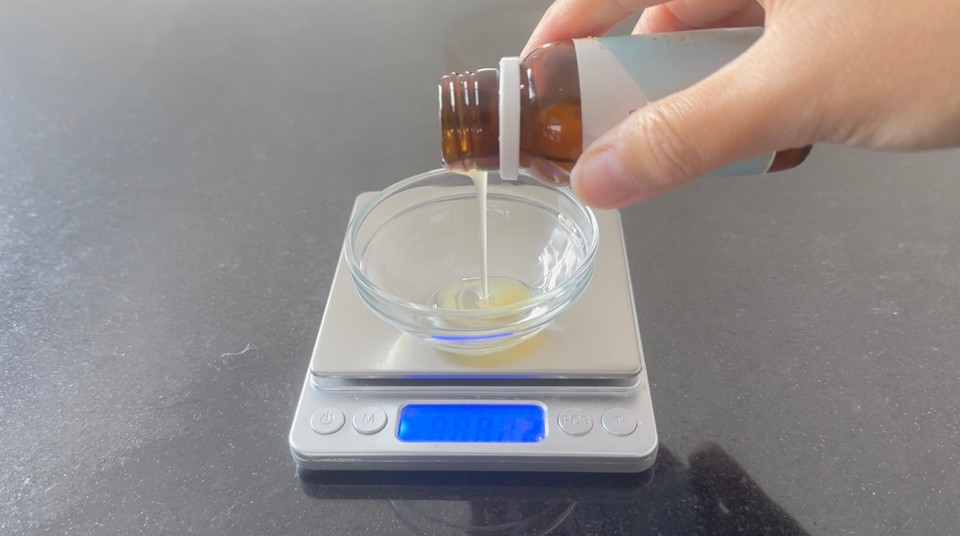
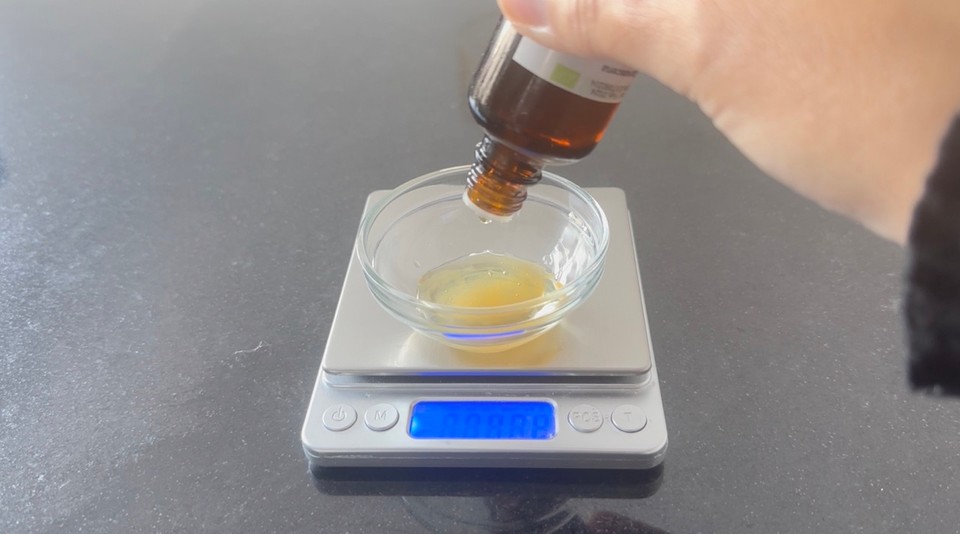

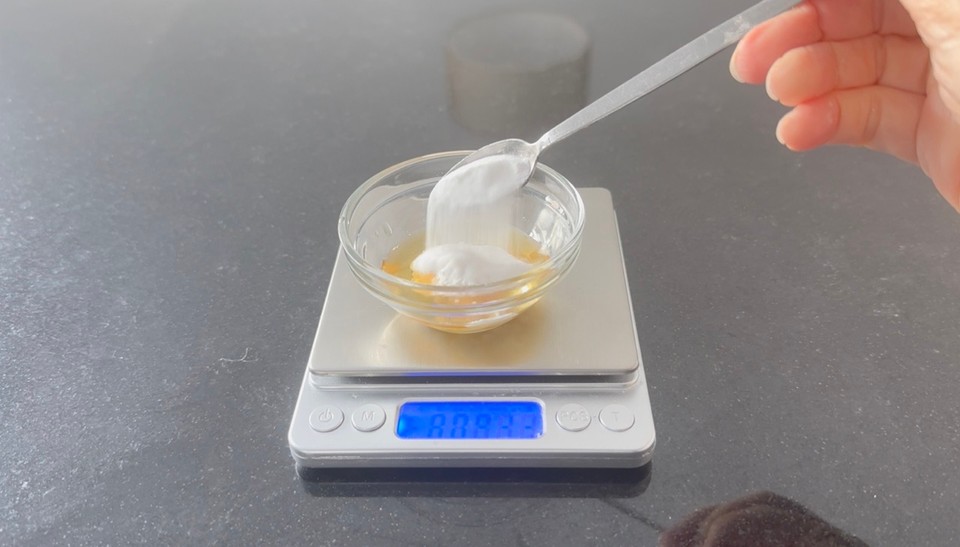
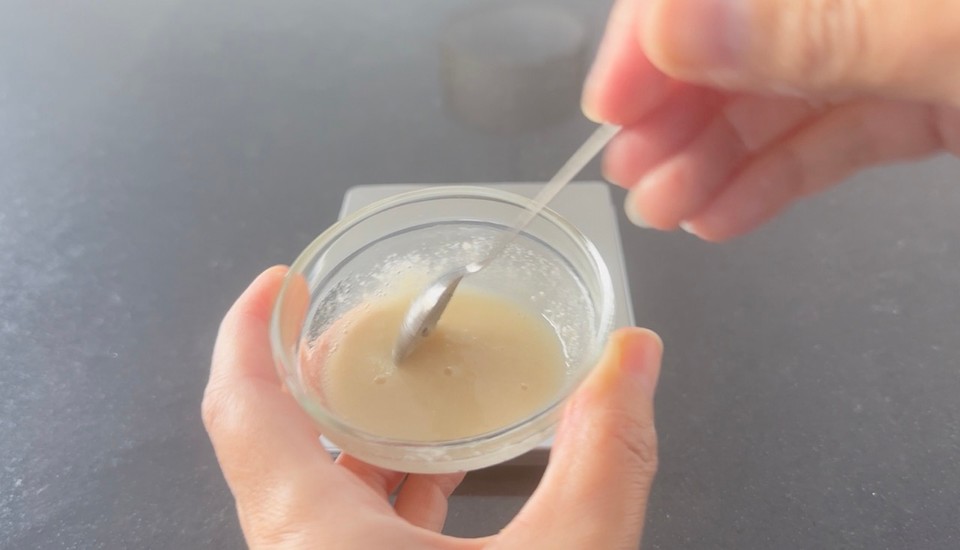

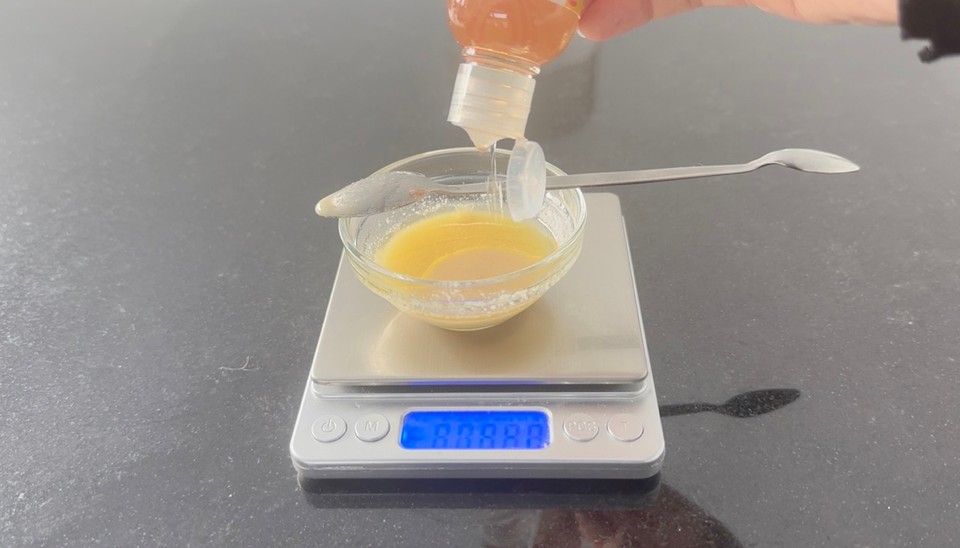
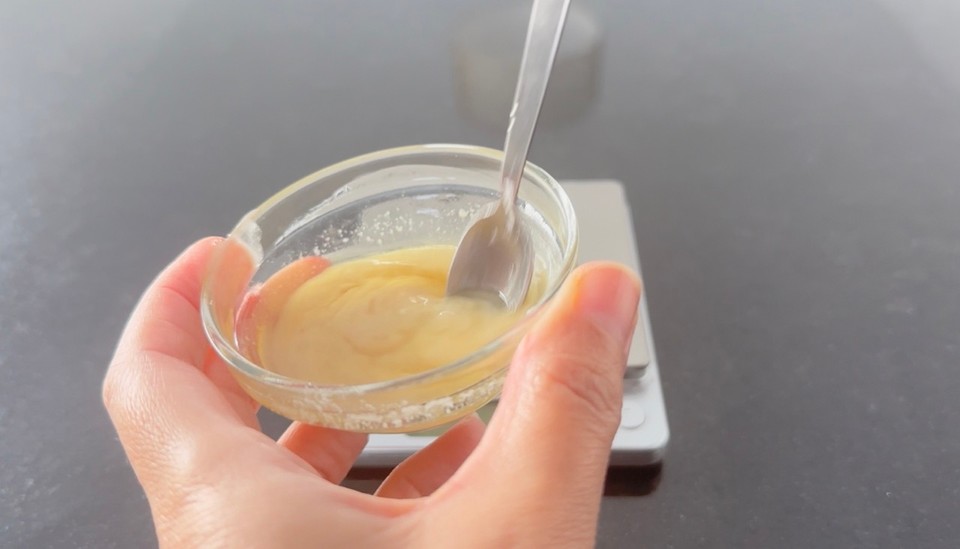
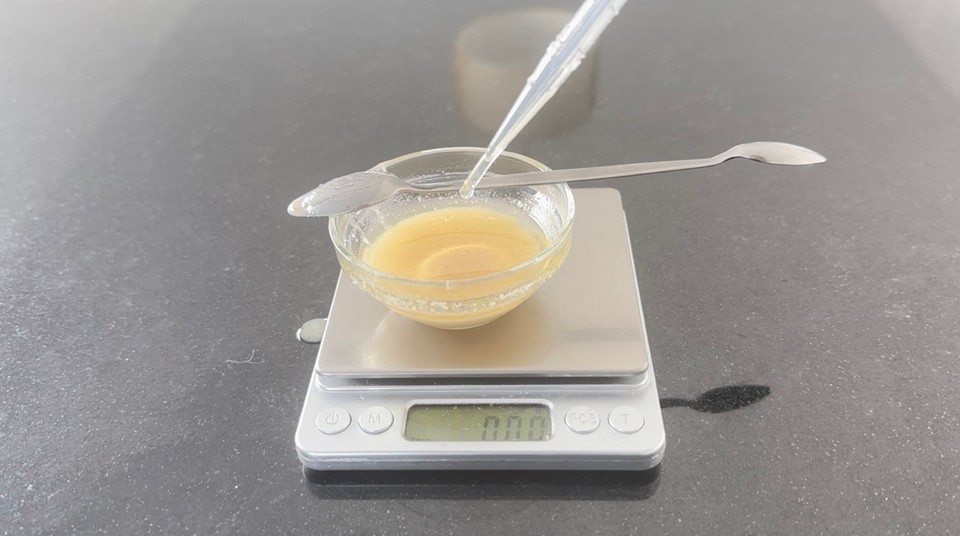
- After 15-20 minutes (make sure the oil phase has completely melted), remove both phases from the heat.
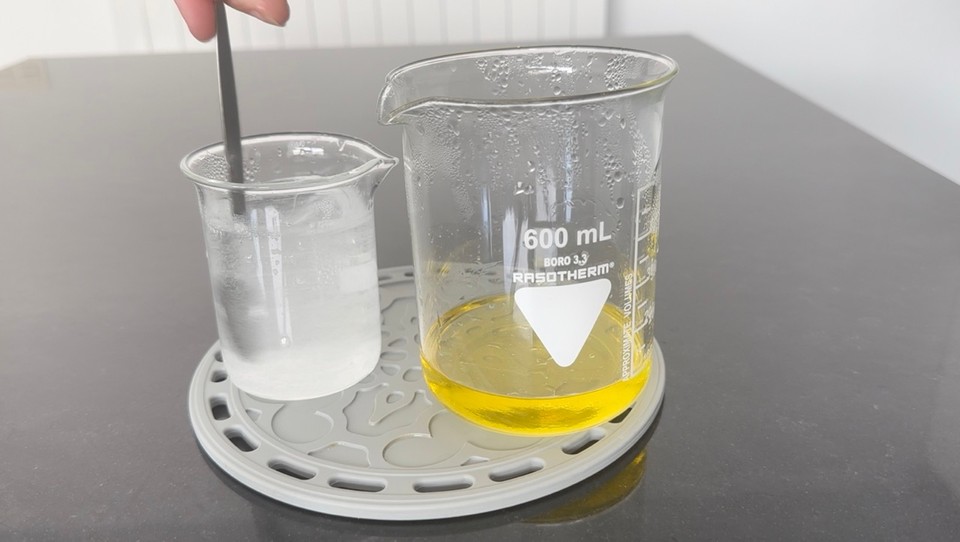
- Combine the oil phase with the water phase. Use an immersion blender (or a homogenizer) to combine.

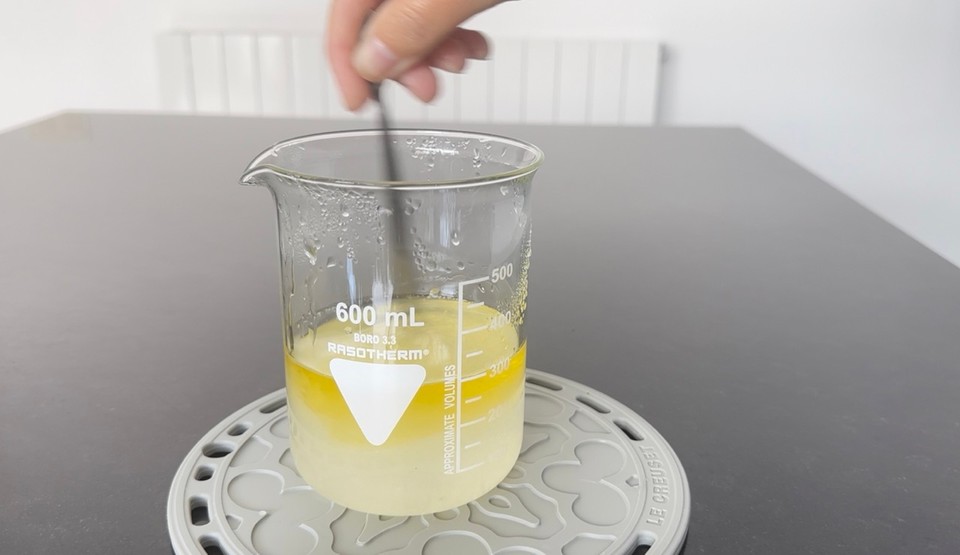
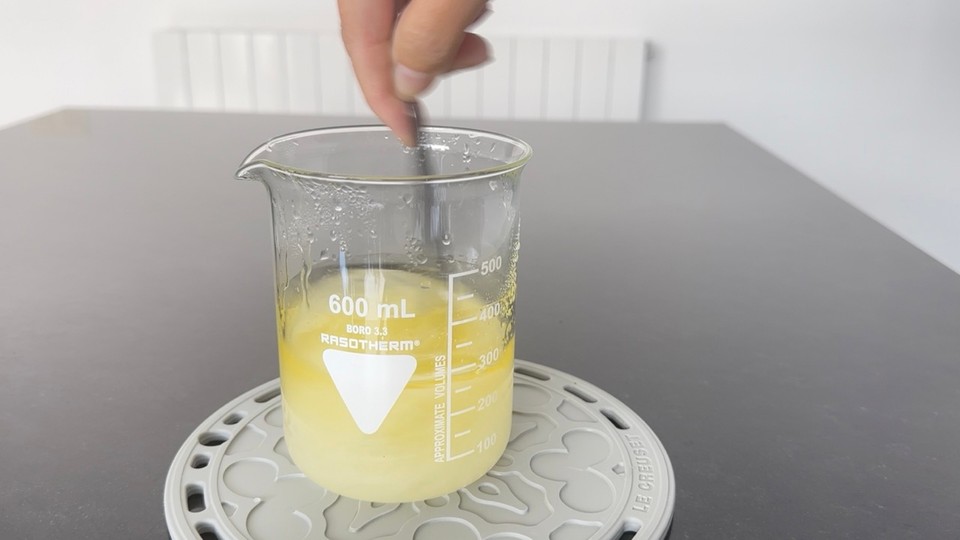
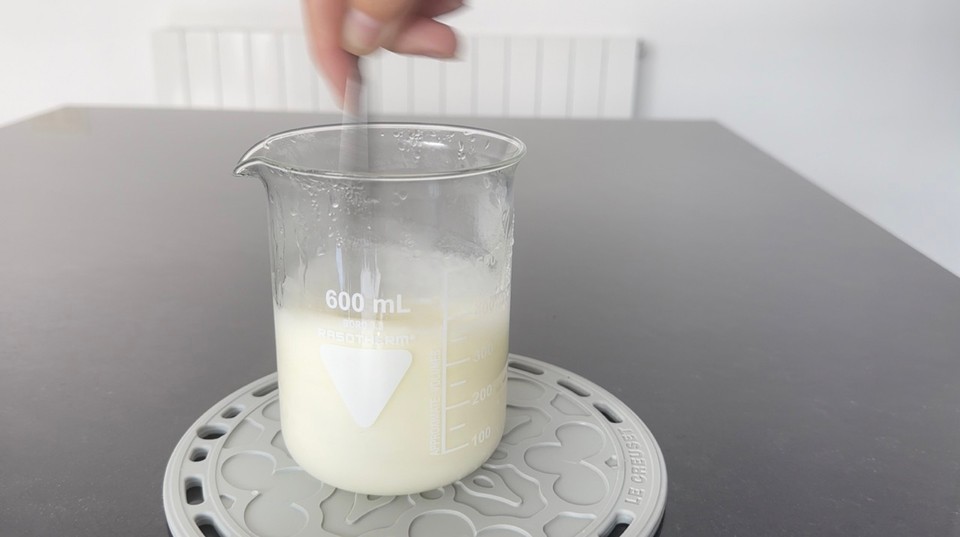
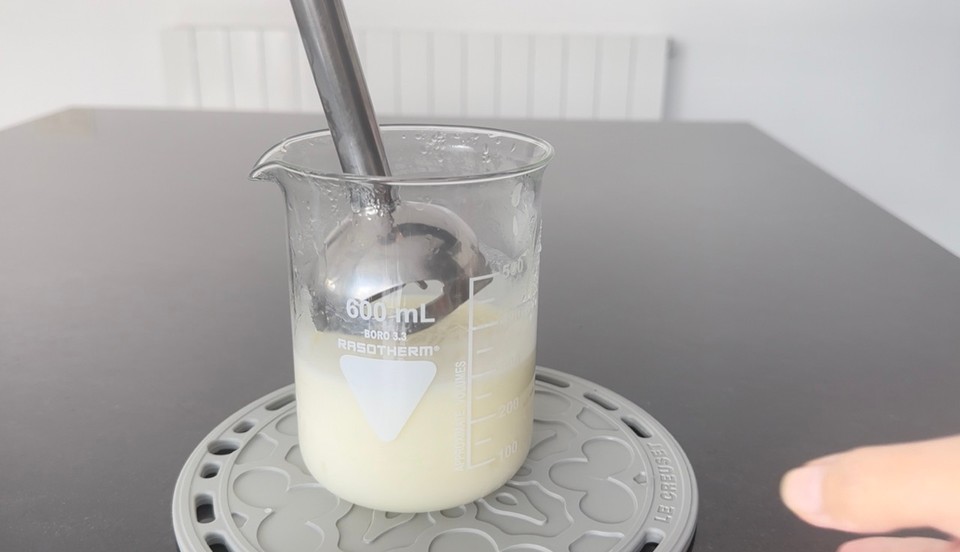
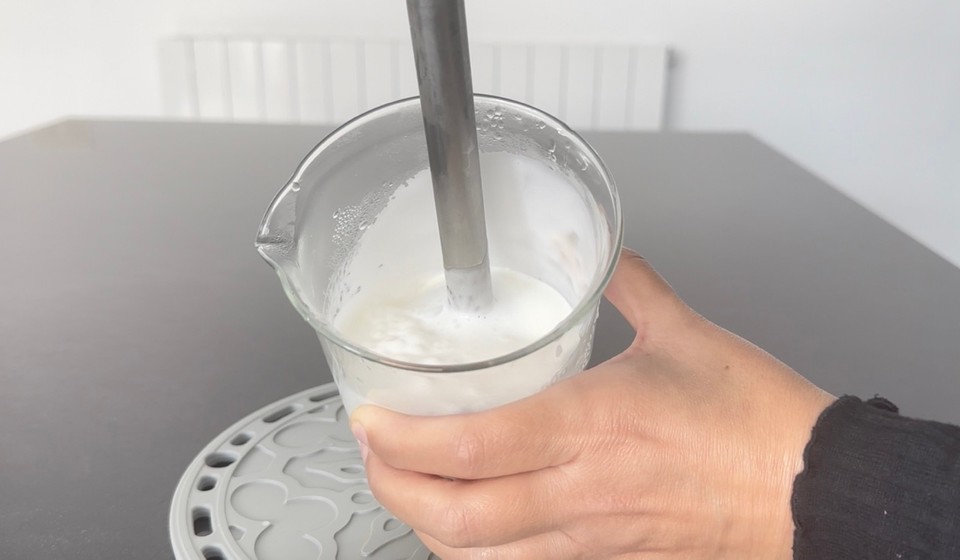
After the emulsion has cooled, check that the temperature is less than 40°C and add phase C. Mix to combine.
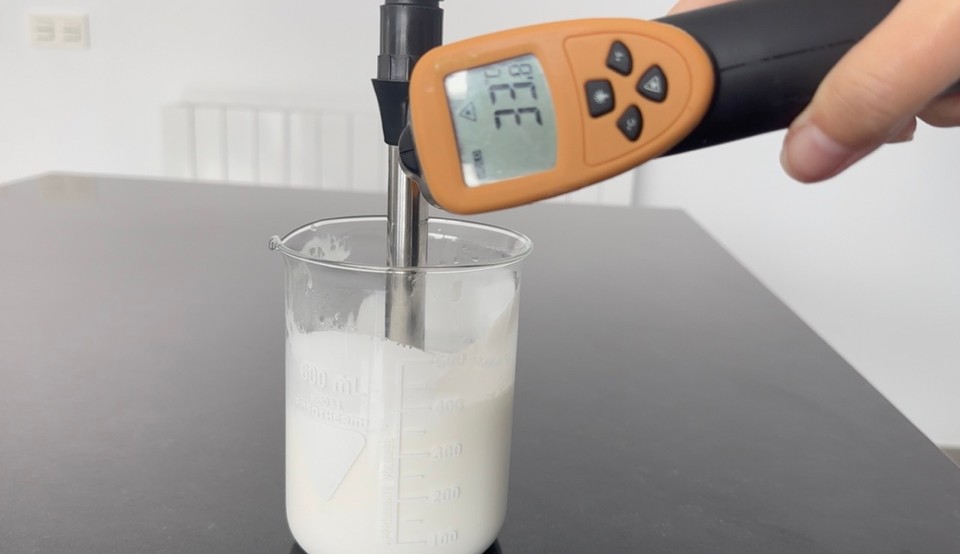

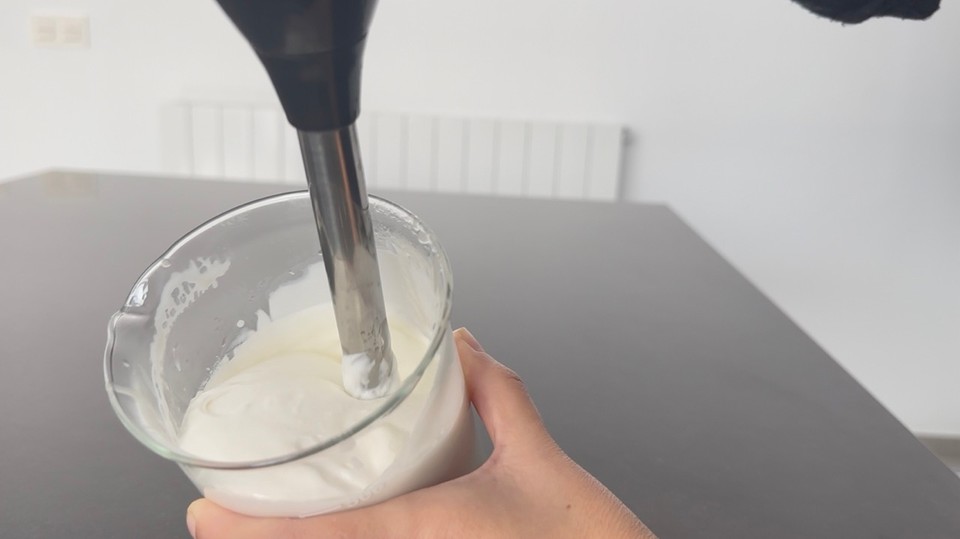



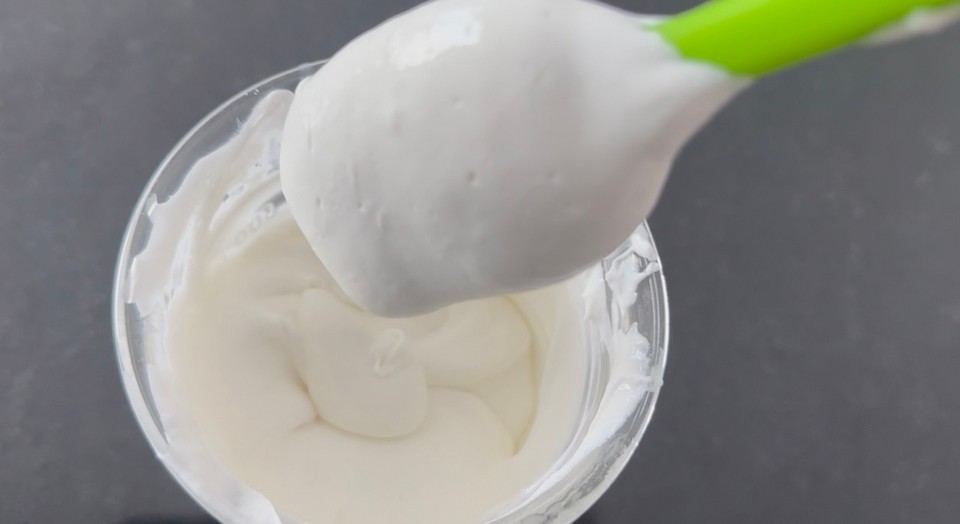

- Check the pH level and adjust if necessary. Read about pH adjustments here.
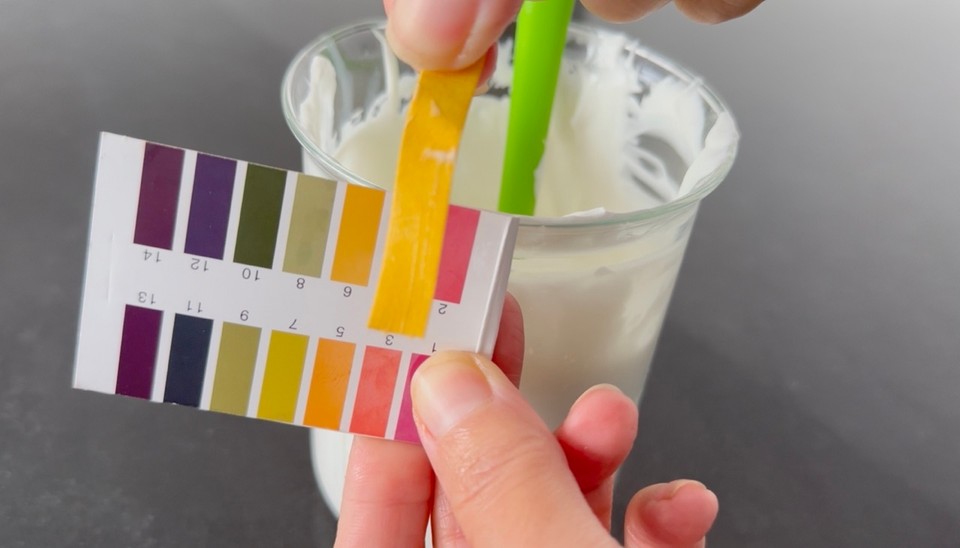
- Place the lotion into a container of choice (I used tube containers). Final consistency will form after a few hours.
